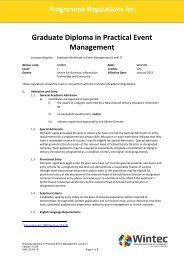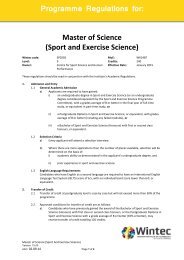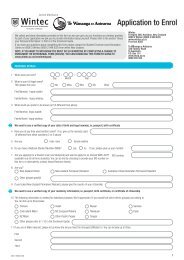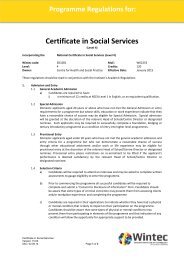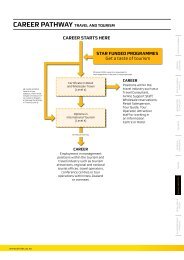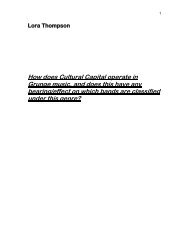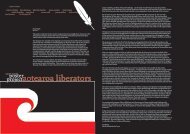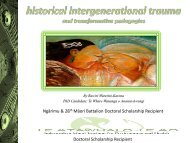Nursing Handover Research Project - Wintec Research Archive
Nursing Handover Research Project - Wintec Research Archive
Nursing Handover Research Project - Wintec Research Archive
You also want an ePaper? Increase the reach of your titles
YUMPU automatically turns print PDFs into web optimized ePapers that Google loves.
are visible and well talked about. Anxiety and distress are far less visible. Anxiety is<br />
discussed as being ‘unconscious and unknown’ (Evans et al., p.195). <strong>Nursing</strong> work is<br />
constructed by many unknowns on a daily basis. It is these unknowns that make nursing very<br />
unique and this affects nurses. The concept of anxiety is not able to be objectified and thus<br />
creates difficulty. In a scientific world that wants to standardise everything this concept has<br />
no position (Chernomas, 2007). Social systems and group culture work as protection in<br />
opposition to anxiety (Menzies-Lyth, 1988).<br />
The emotional element of nursing is core in relation to caring. Without emotion, nursing<br />
would be very one dimensional and would change the nurse-patient relationship. Nurses<br />
need to be able to share emotion and discuss their work with their nursing colleagues. The<br />
face to face handover offers this opportunity to support the nurse to discuss their feelings or<br />
experiences associated with death, cardiac arrest or any other of the multitude of events that<br />
may occur in the nurses’ day (Radka, 2003). A real place, a real time to share creates the<br />
potential for the nurse to have some form of control over the experiences that have been<br />
encountered (Menzies-Lyth, 1988).<br />
Another noticeable loss in handover construct is the patient. In contemporary times a<br />
participatory relationship has merit. A shared relationship between patient and nurse is<br />
fundamentally important. Including the patient in their care seems simplistic, yet still remains<br />
a difficult ideal to meet. By carrying out person centred care, both the nurses’ and patients’<br />
psychosocial and cultural aspects are acknowledged (Tonuma & Winbolt, 2000). Person<br />
centred care consists of four elements; prerequisites (nurse attributes), care environment<br />
(context of care delivery), person centred processes (care delivery through different activities)<br />
and expected outcomes (results of care) (McCormack & McCance, 2006). Nurse attributes<br />
include professional competence, advanced interpersonal skills, job dedication, transparency<br />
of values, and beliefs consolidated in the concept of ‘knowing self’ (McCormack &<br />
McCance). The context of care comes from an institutional/environment level incorporating<br />
skill mix, shared decision making systems, good staff relationships, supportive management,<br />
power sharing and valuing innovation (McCormack & McCance). Person centred processes<br />
look at care through patient engagement, cultural safety valuing the patients values and<br />
beliefs, meeting physical needs, sympathetic presence and shared decision making on care<br />
(McCormack & McCance).<br />
28



